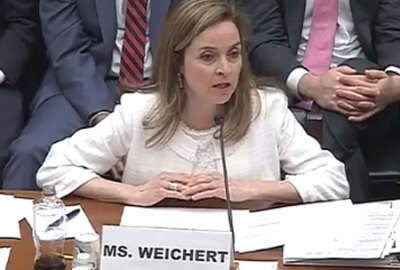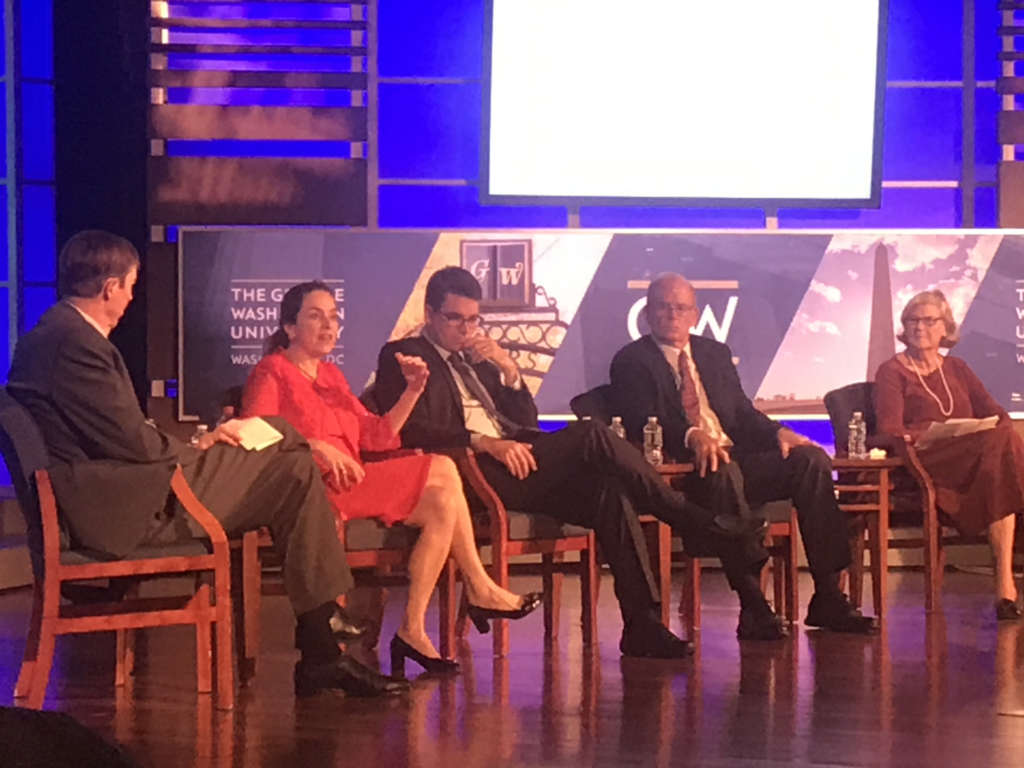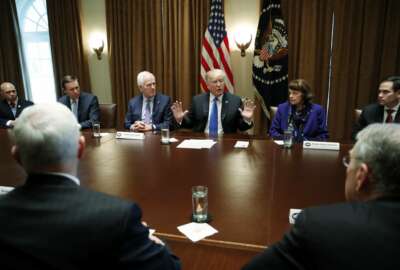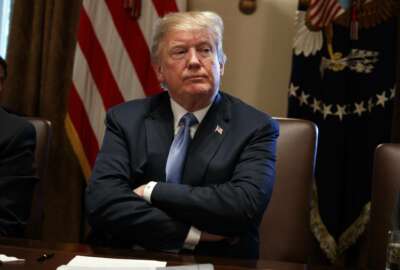
Having a consistent OMB DDM can impact federal management more than any specific agenda
At the IBM Center for the Business of Government’s 20th anniversary celebration, three former OMB deputy directors for management offered advice and told stories...

If you were to rank the three most important roles in government management today, Margaret Weichert currently holds two of them — the deputy director for management at the Office of Management and Budget and the director of the Office of Personnel Management.
Weichert, who took over the OPM role on an acting basis just over a week ago when Jeff Pon suddenly resigned or was asked to resign or was dismissed — nobody is really sure what happened including most of those inside OPM as its email was conveniently down for most of four days when the change happened and the White House has talked little about the reasons for Pon’s departure. But that’s a story for a different time (hint, hint: DM @jmillerwfed me if you want to talk).
The third role, of course, is the administrator of the General Services Administration, which Emily Murphy currently holds.
For this discussion, let’s just focus on Weichert’s role as DDM. Over the eight months since the Senate confirmed her, Weichert has rolled out the full President’s Management Agenda, initiated the Government Effectiveness Advanced Research (GEAR) effort to create an applied research effort to tackle management challenges, and is spearheading a major reorganization and reform effort across the government.
And on top of these and many other initiatives, more importantly is that Weichert has garnered widespread respect from Capitol Hill, industry experts and inside agencies. As we saw time and again during the Obama administration, the lack of a consistent DDM stunted far-reaching management changes over the last eight years.
The benefits of consistent messaging and leadership were probably the biggest messages from the former DDMs who took the stage Oct. 10 to help commemorate and recognize the IBM Center for the Business of Government’s 20-year anniversary.
Clay Johnson, who served six years as the DDM during the George W. Bush administration, is standard bearer when it comes to consistency in the role. Many times during his tenure from 2003 to 2009, the OMB leaders underneath him whether Karen Evans or Robert Shea or Paul Dennett knew Johnson had their back and they routinely used him to address grumblings at the agency level.
Johnson’s consistency in the position meant the Bush administration’s PMA had one voice to continually push progress.
The longer Weichert stays, the better for federal management
If Weichert does nothing else, staying in the DDM position for 3-4 years will make the kind of impact on federal management areas like IT modernization, better use of data and a reskilled workforce that the Trump administration hopes to achieve.
Weichert said one of her biggest surprises over the last eight months is the size of the appetite for change there is in the federal workforce.
“We can connect to the power of 2.1 million civilian workers in our workforce, who are dedicated, have passed our background investigations and have been here and know all the problems,” she said at IBM Center event in Washington. “We have to enable the power of the people in government. They are our best brand actors. They are our best storytellers. They are the emblems of what we are all trying to do.”
So how can Weichert continue to harness the power of the federal civilian workers and enable them to power government? Here is what the former DDMs said she and others should keep in mind as the government reform effort continues to evolve:
“The way [the PMA] was designed to be done made it successful, which I think is a huge lesson for DDMs of the future. It was not done as a separate deal. Some deal across the street from OMB where a bunch of smart people were trying to figure out how the government ought to work and then go in and do it to the agencies. It was done within OMB. Most intelligently and brilliantly, it was done with the resource management officers (RMOs) at OMB. One of the most important facts of fiscal life is everybody wants their budget officer to be really happy. So if the budget officer was involved in the management programs, they were going to be paying a lot of attention at the agencies on what the management folks wanted done because it almost certainly will impact what kind of budget they got.” — Clay Johnson, DDM from 2003 to 2009.
“I think OMB is uniquely situated to provide conventional wisdom to sometimes unconventional senior people to say exactly what could or should be done maybe by taking your idea and saying, ‘We tried that once and it failed miserably. That doesn’t mean you have to abandon your idea, but it does mean you have to come to grips with the sources of the failure and you can learn from that.’ The thing I did when I was in the Obama transition was to preach nonstop, ‘LISTEN to the civil service for god’s sake. Bring them in and ask them questions.’ I kept saying the same thing because it was critically important.” — Sally Katzen, DDM from 1999 to 2001.
“Be creative and be creative also by embracing your career colleagues, in particular, as you work with them on your creative ideas. I go back to the U.S. Digital Service (USDS) example in that, one could’ve planned and drafted legislation and a whole detailed approach to this concept, then put it in a budget and asked Congress for the money and maybe some authorizing legislation to go try to pursue this thing. Or, one could just go do it within existing authorities. One had to look at that authority, look at OPM and find the right kind of hiring authorities that existed and put all the pieces together to create out of basically whole cloth this group of basically 200-plus technologists that came in overnight and worked for a couple of years. As we found out over the couple of years, that concept was validated by Congress by bringing more money to the table as they did their work and Congress bringing even broader authority through the form of legislation.” — Andrew Mayock, DDM 2016-2017.
And, of course, Weichert and other DDMs always can rely on the IBM Center for the Business of Government. Over the last 20 years, it has issued more than 350 reports, published 23 books and conducted more than 500 radio and podcast interviews with government leaders who shared their insights about the challenges and opportunities agencies face.
As the DDMs said time and again, federal management is a non-partisan issue and good government is easy to coalesce around so let’s hope Weichert sticks around long enough to accomplish some of these important tasks.
Copyright © 2025 Federal News Network. All rights reserved. This website is not intended for users located within the European Economic Area.
Jason Miller is executive editor of Federal News Network and directs news coverage on the people, policy and programs of the federal government.
Follow @jmillerWFED
Related Stories






